
“What kind of worm is this? Please let me know,” asks this reader in his submission. The worm our reader is referring to is an off-white, semi-transparent color, with a dark brown, bulbous head and a tubular body.
Besides this photograph, which is of excellent quality, our reader does not provide more context than what is quoted above. Because of this, it is difficult to say exactly which of the generic white larvae this could be. That said, of the ones that typically enter homes, we think this is either a pantry moth larva or a webbing clothes moth larva. These are both household pests that affect different areas of one’s home; the pantry moth tends to stick to the kitchen and pantry, while the webbing clothes moth haunts the closets, attics, taxidermy and pretty much any areas where there are animal-based materials.
The pantry moth, also known as the Indianmeal moth, is tiny (about 3/5-inch) and a variety of shades of brown. In actual fact, upon close inspection, its wings are quite interesting, if not somewhat beautiful to behold. The body of the moth is split into three color segments; the burgundy head, a beige middle section and then the gold and dark brown-striped tips of its wings. Its larvae look exactly like this one in the photograph, and it is our opinion that this is most likely a pantry moth larva. However, for the sake of being sure, we will also consider the possibility of it being a webbing clothes moth larva. The adult webbing clothes moth is also small in size (approximately 4/5-inch) but is a silvery-white color, with a light brown head. Its larvae also look like the one our reader photographed, though oftentimes they are less yellowish in color and more of a chalky white.
Unfortunately, when homes experience infestations of these moth larvae, significant damage can be done by either species. That is not to say our reader is experiencing an infestation. These larvae can be brought in from external sources and did not necessarily hatch within the home. In fact, pantry moth larvae are most often brought in from the grocery store. Pantry moth larvae will feed on any grain-based foods in the kitchen and pantry, as well as dog food and nuts. They can thus already be present (usually in egg form) inside the products one buys from the store. Infestations of them are usually not noticed until they have already ruined a piece of food, after which it is no longer safe to eat. Combating a pantry moth larvae infestation necessitates freezing and consequently throwing out infested foods, cleaning out pantries and kitchen cupboards, and storing at-risk food items in sealed containers.
Webbing clothes moth larvae can also be brought in from the outside, usually on clothing (especially second-hand clothing), as this is primarily what they feed on. Any product that is even partially made from animal materials is game for clothes moth larvae, but so is loose hair, fur or feathers. To eliminate webbing clothes moth larvae one must implement a strict and consistent cleaning routine that involves vacuuming up the source of the infestation, laundering infested (and potentially infested) articles of clothing, steam-cleaning carpets, and storing animal-based garments and other products in airtight containers.
If our reader does think she may be experiencing an infestation and wants more in-depth information on either species of moth larva, we recommend that she checks out this past article on pantry moth larvae or this one on webbing clothes moth larvae. To find out specifically which one she is dealing with, we recommend that our reader check for the source of the infestation; if the larvae are most concentrated in the kitchen, they are most likely pantry moth larvae, but if they are most concentrated somewhere where they would have access to animal-based textiles, then they are probably webbing clothes moth larvae.
To conclude, the “worm” our reader found is either a pantry moth larva or webbing clothes moth larva. Neither species of larva is directly harmful to humans, but they are harmful to the home. For that reason, we urge our reader to search for more larvae and find out if this is an infestation as soon as possible so that she can deal with the problem before it gets out of hand. We hope that we answered our reader’s question sufficiently and that this article proves helpful.
All About Worms is always free, always reader-supported. Your tips via CashApp, Venmo, or Paypal are appreciated! Receipts will come from ISIPP Publishing.
You might also find these guys interesting!

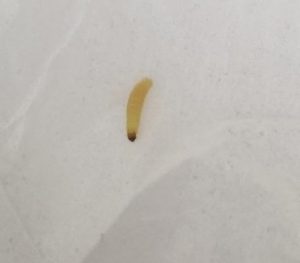



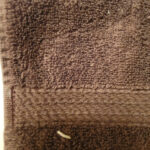
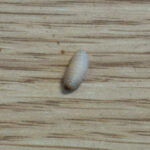
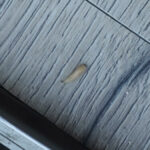

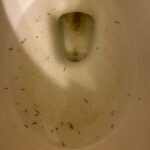
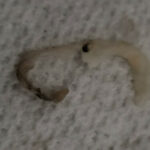

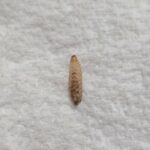






Living in your feet?… I’m not a certified expert… But if they are just in your feet… I would get some Tylenol pm, chamomile tea bags, bottle of peroxide, bottle of rubbing alcohol, a tube of auquaphor, a bag of new socks.. (white cotton ones preferably higher than just ankles… You might want to get a tube of over the counter women’s yeast infection cream… box of bandaids.. I prefer cloth ones.. make sure they big enough to cover the infected area with enough clearance around it And you might want to get x2 of all of that… **Get you a box of rubber gloves… **And a package of new washclothes, and hand towels. Cheap throw aways…** Make sure you have garbage bags handy and easily manuverable… If you can afford it, I would get a bottle of Lysol Spray… Disinfectant …Make sure it kills 100 percent of everything….and ****follow the directions ***when using it. You’re going to want to Attack…smartly and efficiently figure out your simplified routine and “stick to it”….Don’t piss them off… The calmer, the better… But don’t allow to spread… Sleeping pills are great to crush up and add a bit of water to make a paste to put the parasite to sleep so you can get them out swiftly…. Make sure you have some sort of 100 percent parasitic killer to soak the water that you use before disposing it .. don’t panic? it could always be worse and if you don’t “buckle down ” and isolate your contamination it will get worse more often than not. So—. Put to sleep…. Soak feet in Luke warm chamomile and/or lavander tea to relax your derma(layers of skin)… Preferably if possible in any way, just the infected areas..if possible … You can soak washclothes and drape over infected areas… After this a light water rinse. Splash some peroxide over the area, wait a few minutes then splash with a bit of water… Keep these liquids all going into one bucket/ bowl…whatever you choose to use… Then you’re going to want to slowly and sparingly and it might sting or burn… Dripple rubbing alcohol onto it…. Let it do its thing….you can splash a bit of water over that or not… Then let air dry until completely dry. Don’t move from over your bucket though…not yet…ok then, apply either aquaphor or the women’s cream, cover lightly with bandage, carefully put on sock as to not spread… It’s hard to say exactly without seeing what is exactly occuring… But something of these sorts constant, carefully and committed until complete should work… Make sure everything you touch, use, gets water or ointment run off on it … Keep it all sanitized, don’t mix your clothes with regular laundry, try to use throw aways instead until contamination gets cleared up….bleach is good to have handy…don’t mix it with comet though. Keep contamination site on person in check , clean and covered at all times except for cleanings and make sure you allow time for it to dry out on a regular basis.
I have the exact same thing live in south Florida mainly in my feet but I can pull them out with tweezers everything thinks I’m crazy until I show them sometimes you can see them through the skin ruining my life someone please help? Me figure out what to do, have you tried anything for tapeworm even though I know it’s not that way to many and way to small I’m just trying to figure out stuff you have tried maybe to save me some time please respond.